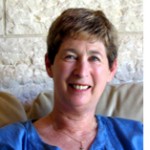By Dorothea Shefer-Vanson

JERUSALEM — To mark both the fiftieth anniversary of the opening of the Israel Museum and fifty years of German-Israeli diplomatic relations, the Museum is currently presenting an exhibition of masterworks from the Neue Nationalgalerie in Berlin.
The exhibition, entitled ‘Twilight over Berlin’ and showing works from the period between 1905 and 1945, provides a fascinating glimpse into the art scene of pre-WWII Germany. It also constitutes an attempt to explain what the Nazis defined as ‘degenerate art’ (entartete Kunst) as opposed to ‘genuine German art,’ and to which they devoted separate, peripatetic exhibitions in the 1930s.
The works on display in Jerusalem leave the visitor with a sense of wonder at the wealth and originality of the creative minds that produced them, much of it representing the Expressionist school of painting and by painters affiliated with the Blue Rider and Bridge groups, with only a relatively small percentage being created by Jewish artists. The film screened at the entrance to the exhibition depicting ‘a typical day in Berlin’ and created in 1927 by director Walther Ruttmann provides a fascinating glimpse into the daily life of the population of the metropolis.
In association with the same anniversary, the Museum is also displaying a selection of German Renaissance prints in an exhibition entitled ‘Dürer and Friends,’ consisting of woodcuts and engravings culled from the Museum’s own Prints and Drawings collection. Another allied exhibition, ‘New Types; Three Pioneers of Hebrew Graphic Design,’ is devoted to three graphic designers and originators of Hebrew typography who emigrated to pre-State Israel from pre-WWII Germany. The three ‘yekkes,’ Franziska Baruch, Moshe Spitzer and Henrt Friedlander, lived and worked in Israel for many years, leaving their imprint (sorry about the pun) on Hebrew typefaces, which they sought to simplify and modernize, each one in his or her own individual way.
In addition to these visual feasts, the anniversary of German-Israeli diplomatic relations also brought Leipzig’s renowned Gewandhaus orchestra and St. Thomas choir to Israel to perform Bach’s Christmas Oratorio. This was an occasion not to be missed, and the performance was indeed memorable. The precision and musicality of instrumentalists and choristers alike, some of the latter still very young boys, constituted a once-in-a-lifetime experience for many of us in the audience. A richly illustrated brochure depicting the musical and artistic delights of the region of Saxony was distributed free in the foyer evidently seeking to encourage its readers to make the trip to that area, which it described as ‘a paradise for music-lovers.’
In one of its paragraphs the phrase “Elector Augustus the Strong was addicted to porcelain” caught my eye, and upon reading further I learned that this eighteenth-century ruler did much to encourage the manufacture of fine porcelain in his realm, which included Dresden, as well as accumulating the largest, high-quality specialist collection of ceramics in the world.
Fifty years of diplomatic relations have served to foster artistic and musical exchange between our two countries, as well as providing financial reparations, and it is sobering to recall that just over seventy years ago Germans were hunting down and murdering Jews at a rate unprecedented in human history. My own German-born parents refused to ever set foot again in that country, the country for which both my grandfathers fought in the First World War. Today, German tourists and well-wishers come to Israel, and I have visited Germany a couple of times (once to be present at the launch of the book of my grandmother’s letters published by the Hamburg municipality). To be quite honest, I must confess – albeit with mixed feelings – that I hope one day to visit Leipzig and hear the St. Thomas choir sing in the church where Bach once composed and conducted his sublime music.
*
Shefer-Vanson is a freelance writer who is based in the Jerusalem suburb of Mevasseret Zion. She may be contacted via dorothea.shefer@sdjewishworld.com. This article originally appeared in the February issue of the AJR Journal. Comments intended for publication in the space below must be accompanied by the letter writer’s first and last name and by his/ her city and state of residence (city and country for those outside the U.S.)